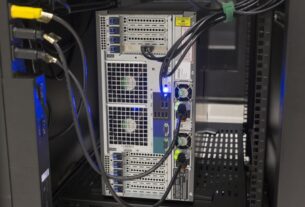Introduction
Think of the Earth as a vast tapestry stitched with forests, rivers, deserts, and cities. Now imagine trying to distinguish every shade and texture of that fabric from miles above. Satellite imagery offers this grand perspective, but the raw patterns are often tangled—like threads woven so tightly that telling one colour from another feels impossible. Deep learning, combined with image augmentation, acts like a magnifying glass and palette cleanser, sharpening distinctions so the canvas becomes readable. This transformation is at the heart of modern land cover classification, where machines learn to interpret our planet’s surface with remarkable precision.
The Challenge of Earth’s Patchwork
When satellites peer down, they capture sprawling mosaics of terrain. Yet these images don’t always tell the whole truth. Shadows from clouds obscure farmland, urban sprawl blurs with barren land, and forests of different species blend into uniform greens. For scientists, it’s like listening to a symphony where half the instruments are muffled. To train deep learning models effectively, vast amounts of diverse, clean data are needed. Augmentation—rotating, flipping, and even adding synthetic noise to images—expands datasets, teaching algorithms to adapt to real-world variability. For learners in a Data Scientist course, this illustrates how solving real planetary problems depends not only on models but on preparing the canvas properly.
Deep Learning as the Artist’s Brush
If satellite imagery is the canvas, then deep learning serves as the artist’s brush. Convolutional Neural Networks (CNNs) sweep across pixel grids, identifying textures like brushstrokes that separate water from woodland or asphalt from grassland. But even the most skilled painter struggles without practice. Augmented images act as endless sketchbooks, offering algorithms countless scenarios to refine their craft. For instance, flipping an image vertically mimics viewing a region at different latitudes, while adding noise simulates atmospheric interference. Through such training, models become robust, recognising features across lighting conditions, seasons, and geographies. These practices emphasise why a Data Science course in Mumbai often blends theory with hands-on experiments in computer vision.
From Droughts to Dense Cities: Practical Impacts
The impact of precise land cover classification is not academic—it’s deeply practical. Governments rely on these insights to monitor deforestation, track urban expansion, or plan irrigation systems during drought. Consider disaster management: when floods submerge rural regions, enhanced imagery helps rescue teams map affected areas quickly. The same principles guide urban planners deciding where green belts should thrive amid growing cities. Augmentation ensures that deep learning models don’t crack under pressure, having already rehearsed under varied and challenging conditions. In classrooms, projects built on such scenarios bring to life the global significance of applying machine intelligence to environmental resilience.
Storytelling Through Pixels
Every pixel in a satellite image carries a story. One may reveal a shrinking glacier, another a newly built highway, and yet another an encroaching desert. Without augmentation, some of these stories remain hidden, drowned by noise or imbalance in the dataset. Augmented datasets act like editors, ensuring every story has equal voice in the narrative. By doing so, the resulting deep learning models aren’t just classifiers—they become storytellers of Earth’s evolution. Professionals learning through a Data Scientist course discover that beyond code and computation lies the art of communicating change through data-driven stories.
The Future of Planetary Vision
As climate pressures mount and cities expand, the ability to classify land cover swiftly and accurately will only grow in importance. Emerging methods like generative adversarial networks (GANs) promise to create entirely new satellite-like images for training, pushing augmentation further into the realm of creativity. Imagine a model learning how to detect desertification by training on synthetic images of grasslands slowly turning arid. These advances underline why the curriculum of a Data Science course in Mumbai increasingly highlights the fusion of AI innovation with pressing global challenges. The fusion ensures future data professionals not only analyse the world but actively help preserve it.
Conclusion
Augmenting satellite images for land cover classification is more than a technical process—it is the act of teaching machines to see the Earth with clarity and empathy. By expanding datasets and refining deep learning models, scientists and engineers are equipping humanity with sharper tools to protect ecosystems, guide urban growth, and prepare for natural disasters. It is a journey where data ceases to be abstract numbers and instead becomes a guardian of the planet’s stories. For learners stepping into this realm, the lessons extend far beyond algorithms—they are about decoding the very fabric of our shared home.
Business Name: ExcelR- Data Science, Data Analytics, Business Analyst Course Training Mumbai
Address: Unit no. 302, 03rd Floor, Ashok Premises, Old Nagardas Rd, Nicolas Wadi Rd, Mogra Village, Gundavali Gaothan, Andheri E, Mumbai, Maharashtra 400069, Phone: 09108238354, Email: enquiry@excelr.com.



